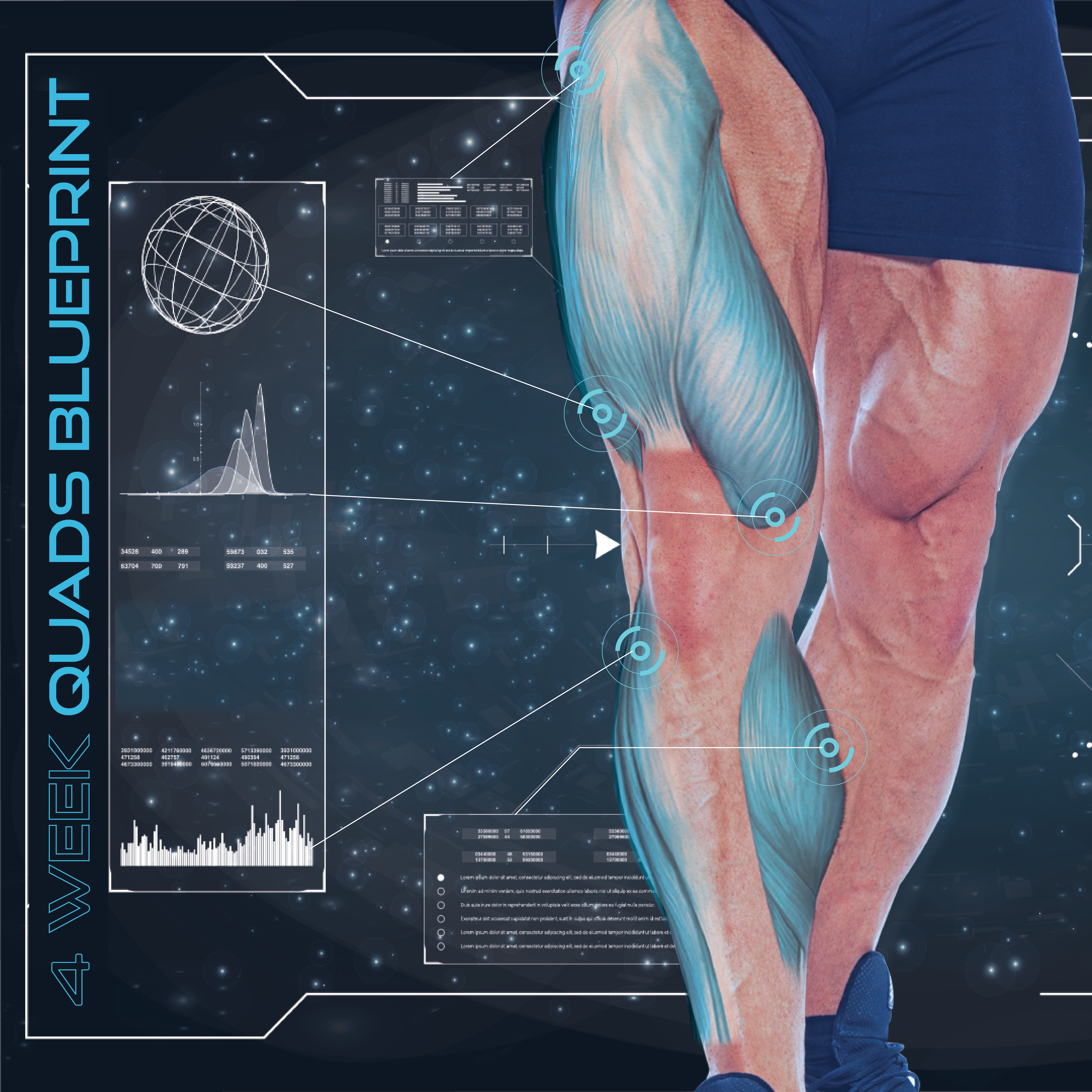Introduction
For most bodybuilders, hitting the gym consistently is the easy part of the muscle building lifestyle. On the flip side, many folks have a pretty rough time nailing their nutrition down properly. As you probably know, we have plenty of information on this site about nutrition and even dozens of nutrition lectures on The Muscle PhD Academy (here) if you need more help with optimizing your diet for muscle growth and/or fat loss.
However, one shortcoming with many education sources is that they don’t discuss applicable ways of implementing that information into your diet. We know that just about any diet can support virtually any goal as long as your calorie, macronutrient, and micronutrient intake are compatible with what you’re trying to achieve. Unfortunately, though, knowing that information is just half the battle. Adhering to such a diet is what makes all of the difference when you’re attempting to make body composition changes. If you can’t stick to a nutrition plan, it can’t help you grow or burn fat – much like how you could never build a house if you just wing it without a plan.
Many people have a hard time sticking to their nutrition plan because work, school, stress, or other items get in the way of all the things related to solid nutrition – like grocery shopping, cooking, cleaning, food storage, eating, etc. All that stuff can easily take up several hours throughout the week whereas a fast-food drive-thru can have food in your hands in 15-minutes or less. Ultimately, many nutrition plans crumble due to convenience; most naughty food choices are super convenient whereas healthier choices aren’t nearly as easy to get your paws on.
With this shortcoming in mind, we’ve dedicated this piece to two unique goals: making bad food choices less convenient and making good food choices more convenient. Let’s get started.
Making Bad Choices Inconvenient
“Bad choices” in this instance mostly refers to things like restaurants, fast food, overly processed or frozen foods, and anything else along those lines. Use your brain; we all know “bad” food when we see it. Since these items are usually convenient, let’s create some strategies to make them less so. To do this, you need to identify your biggest food weakness (fast food, candy, chips, etc.) and create a plan on how to make it super inconvenient to get your hands on that food.
Fast Food
 Fast food is renowned for its convenience; heck, some people probably eat nothing but fast food due to the busyness of their life. What’s a good way to make it less convenient? Well, we all know fast-food is easy because you don’t even have to leave your car to get it. Heck, you barely have to talk to a person – some restaurants now allow you to order ahead on their app and will deliver your food to you in the parking lot. How much more convenient could it get!?
Fast food is renowned for its convenience; heck, some people probably eat nothing but fast food due to the busyness of their life. What’s a good way to make it less convenient? Well, we all know fast-food is easy because you don’t even have to leave your car to get it. Heck, you barely have to talk to a person – some restaurants now allow you to order ahead on their app and will deliver your food to you in the parking lot. How much more convenient could it get!?
Here’s what you need to do: set a new rule for yourself. Every time you want fast food, you have to go into the restaurant to order it. No drive thru. No app. No rewards program. You have to park your car, get out, order at the counter, and wait for your order inside. Now it’s not so convenient, is it? You actually have to wear pants. You have to interact with people. You have to leave your car. If you’re even a little bit introverted, the entire process of interacting with people should completely ruin the fast-food experience for you.
If a big diet weakness for you revolves around fast food, ditch the drive thru or ordering apps. You can only get fast food if you walk in and order at the counter.
Frozen Food
This one requires a bit of an investment (a couple hundred dollars, probably), but if you’re not willing to invest in yourself, how are you ever going to reach your health, fitness, or physique goals? Let’s skip the philosophy for now and get down to business: how can you make frozen food inconvenient? I mean, it’s right there in your freezer practically begging for you to toss it in the microwave.
Your first option is to get a second freezer and store it outside, in your garage, shed, etc. – anywhere that you need to put in a little extra work to get to it. Remember, the area should also have the proper electrical supply, so you can’t just chuck this freezer in the woods behind your creepy uncle’s house. This is the freezer where you store all of your frozen food – pizzas, Toaster Strudels, bagel bites, etc. All that delicious garbage now has to be stored in your inconvenient freezer. In Florida, this isn’t a huge inconvenience, but I grew up in Indiana – no way would I walk outside to grab a snack in January. If you live in an apartment, see if one of your neighbors would be willing to throw your food in their freezer or if they would be willing to store your mini fridge full of junk in their apartment. Odds are your neighbor will politely turn you down. But if you really want to make dietary changes, every possibility needs to be considered.
Another helpful tip is to only get items that you have to heat up in the oven – no microwavable foods. This isn’t necessarily a harbinger of “healthier” choices; it’s just a little less convenient to use the oven. It has to heat up and usually takes quite a bit longer than simply nuking something in the microwave. Remember, we’re all about making these choices as annoying as possible, so take whatever steps you need to remove the convenience from easy foods.
Restaurants
In this piece, a restaurant is an establishment in which you must sit down to eat. Fast food refers to the drive thru, order ahead, etc. One of my biggest weaknesses is restaurants; I love to try new restaurants and I also hate cooking – a perfect combination for frequenting many restaurants. So, how could I make this practice less convenient?
I don’t know about you, but I pretty much pay for everything with my debit card. Why? Because it’s convenient! One easy way to make sit down restaurants inconvenient is by forcing yourself to only pay with cash when you hit a restaurant. If I took this practice on, any time we want to go out, I’d have to hit an ATM on the way to grab cash. That’s annoying and would also limit how many appetizers we can order; if I get out $50, well, our bill better be less than $50!
Another option would be to simply withdraw a set amount of cash at the beginning of each week and have that be your weekly restaurant fund. Setting the fund at a lower level could force you to only eat out once or twice a week, rather than three, four, five, or twenty times. No judgment.
Snacking
 Snacking mostly refers to those periods between “meals” where you might be crunching on some chips, cookies, candy, etc. Anything that comes in a bag and can be stored in a pantry, basically. The easiest method for reducing snacking is to simply not buy or keep snacks in your house. That’s a tough change for many people to make. Baby steps are a better option, so let’s cover one idea for how to change snacking habits – this won’t necessarily make snacking less convenient, but it will definitely limit your snacking.
Snacking mostly refers to those periods between “meals” where you might be crunching on some chips, cookies, candy, etc. Anything that comes in a bag and can be stored in a pantry, basically. The easiest method for reducing snacking is to simply not buy or keep snacks in your house. That’s a tough change for many people to make. Baby steps are a better option, so let’s cover one idea for how to change snacking habits – this won’t necessarily make snacking less convenient, but it will definitely limit your snacking.
Essentially, you’re going to ditch the family sized bags of your favorite snacks. Instead, only get the small individual bags like you would get as a side with a sub sandwich at literally any sub sandwich chain. But only if you were eating fast food or restaurant food, of course. This practice ensures that you can’t plop down somewhere and erase an entire family bag of Dorito’s; rather, you’re stuck consuming an individual serving of Dorito’s and nothing more. Well, besides sucking the delicious nacho cheese powder off your fingers, obviously.
This idea has another secret mechanism for helping curb your snacking – not every snack is widely available in individual packages. Unless your go-to nibbles are one of the more popular items, you might be stuck ditching your favorite morsels for something a little more boring.
Remember, we’re all about adherence at the end of the day, and we’d never recommend getting rid of your favorite foods. However, sticking with smaller snack packages certainly helps limit intake and gets you one step closer to your physique or health goals.
Making Good Choices Convenient
Alright, now the harder step. Making healthy choices convenient. As you’ll see over the next few ideas, the main thing you need to do is plan. If you truly want your diet to be something special that aids you in your body composition or health journey, you’re going to have to make it a priority. Set aside time for all nutrition related things and make sure you can fit these things into your schedule – thus, making them convenient. Oh, how the turn tables.
Grocery Shopping
There are a few strategies to help make grocery shopping healthier and simultaneously more convenient. We all know grocery shopping is mostly disguised misery, but you can shorten it by creating a list beforehand, having a plan on how to move about the store, and getting out of there as quickly as possible. Return your cart to the store or cart return area too, ya jerks.
Additionally, an easy thing to remember with grocery stores is that most fresh foods are stored around the perimeter of the store. The produce section, deli, meat, and dairy areas are almost always around the rim of the store whereas most of your processed, boxed, or frozen foods are in the middle aisles. Try to keep most of your food choices to the perimeter of the store and only venture into aisles to grab things like sauces, spices, rice, coffee, etc.
Lastly, never grocery shop hungry. We’ve all been there before – you hit the grocery between meals and you’re starving. Next thing you know, you’ve got a frozen pizza, family size bag of chips, and a gallon of ice cream sitting in your cart, waiting to be your dinner. From now on, you’re only allowed to grocery shop right after a meal. For me, I usually hit the grocery on my way home from work. Therefore, I pack an extra protein shake that I drink right before I leave work. This curbs my appetite just enough so that I don’t wander into the naughty aisles.
Lastly, if you’re too strapped for time to hit the store, many stores are doing some form of grocery delivery nowadays. Heck, when I was stuck home with Covid, I had to have groceries delivered to our house. Obviously, I was able to do this living in a high population area – less busy areas certainly won’t have as many options for grocery delivery. But, if you’re serious about reaching your goals, you’ll find a way to get groceries into your house, even if it does involve something as extreme as paying someone to shop for you. Do what you have to do, right?
Cooking
 One easy way to make cooking more convenient is to create a menu item that hits all of your macro and micro goals pretty easily. For me, this is home cooked stir fry. For each meal, I have around 8oz of chicken, 1/3 – 1/2 cup of rice (measured uncooked), and about two fistfuls of veggies (super accurate measurement, right?) with whatever sauce I’m feeling. I whip up about 3-4lbs of chicken at a time with 3-4 cups of rice and a cauldron of veggies. The whole process takes about 40-minutes from set up to sticking the last pan in the dish washer and I have a good 6-8 meals ready to roll.
One easy way to make cooking more convenient is to create a menu item that hits all of your macro and micro goals pretty easily. For me, this is home cooked stir fry. For each meal, I have around 8oz of chicken, 1/3 – 1/2 cup of rice (measured uncooked), and about two fistfuls of veggies (super accurate measurement, right?) with whatever sauce I’m feeling. I whip up about 3-4lbs of chicken at a time with 3-4 cups of rice and a cauldron of veggies. The whole process takes about 40-minutes from set up to sticking the last pan in the dish washer and I have a good 6-8 meals ready to roll.
Obviously, this won’t work for pickier folks who want more variety in their diet. It’s also probably not the healthiest method as you’ll inherently reduce the variation in your diet. One easy way around that would be to simply vary the ingredients in your stir fry – swap meats, use different veggies, ditch rice for noodles, etc. Either way, it’s definitely better than grabbing fast food or choking down a frozen pizza, so the health of every dietary choice is relative when you’re improving your habits – remember that.
Ultimately, when it comes to cooking, you absolutely need to have a plan to make it convenient for you. Some recommend always cooking on the same day(s) of the week whereas others recommend a more flexible schedule where cooking doesn’t feel like as much of a chore. For me, I prefer the former – plan your cooking days out so that you never run out of good food at your house. The minute you run out of good food it’s that much more tempting to grab something on your way home from work. By making a weekly meal plan, you avoid running out of food, especially at inconvenient times.
Alas, cooking is something that’s always going to feel like an inconvenient. You can slave in the kitchen for a couple of hours just to literally eat the results and never see them again (unless you vomit from your terrible cooking, who knows). But, if you make a weekly plan and stick to it, you can work cooking into your schedule, and it won’t even feel like you’re cutting time from other areas. Just make it work for you.
Snacks
Since you might be practicing on skipping the massive bags of chips and/or cookies, you’ll have a little extra cash to drop on higher quality snacks. Items like protein bars, fruits/veggies, and even beef jerky for low carb dieters can be much better options for getting you closer to your goals. Certainly, most of these options will still reside in the middle aisles of the grocery store and will definitely be processed to a degree. However, all things are relative, and a slightly healthier snack is progress for most people.
One way I institute this is by keeping our cabinet stocked with Quest protein bars and our fridge full of Greek yogurt, apples, and bananas. Heck, we even found these, like, candy grape things at the store a few weeks ago. They were absolutely amazing, but still grapes so they were nutrient-dense enough to support my health goals as opposed to my usual sugary snacks.
Protein shakes are another great option to grab instead of a bag of chips. I usually keep at least one shake locked and loaded in my fridge at all times so that I don’t even have to mix it up; it’s just ready to go. For most, protein is pretty satiating, too, so chugging a shake between meals might reduce your snack cravings while also giving you a high-quality blast of protein.
Sleep
It sounds odd, but one way to make nutrition more convenient for you is to ensure you’re getting at least 7-hours of sleep every night. For some, this might sound super inconvenient. However, we know that consistent bad sleep usually increases our cravings for hyperpalatable foods (fast food, etc.) and will likely persuade us to overeat as well. Lacking sleep has also been shown in several studies to impair fat loss and muscle growth efforts – obviously a big negative for most people on this site. Therefore, not only can sleep influence your food choices, but it also affects your body composition long-term. How mad would you be if your training and diet were 100% on point but it was simply your sleep holding you back from optimizing your physique? Sleep is easy. If you have serious physique goals, make time for it.
Being well-rested will support virtually every effort you put into life – workouts will be better, work will feel easier, and naughty food choices will be less appealing. You can make a healthy diet more convenient by being consistently well-rested. Your dinner plate and long-term body composition outcomes will thank you for grabbing a few extra Z’s every night.
Conclusion
Ultimately, any diet plan is going to be hard to stick to. No fitness, health, or physique goals come easy, and nailing down your nutrition is often the hardest part. But, finding ways to make a solid diet more convenient for you will give you plenty of extra strides towards reaching your goals. At the end of the day, everything boils down to you making a plan. Make a plan on how to work around your diet weaknesses and make a plan on how to implement cooking and grocery shopping into your daily life.
From being a mediocre athlete, to professional powerlifter and strength coach, and now to researcher and writer, Charlie combines education and experience in the effort to help Bridge the Gap Between Science and Application. Charlie performs double duty by being the Content Manager for The Muscle PhD as well as the Director of Human Performance at the Applied Science and Performance Institute in Tampa, FL. To appease the nerds, Charlie is a PhD candidate in Human Performance with a master’s degree in Kinesiology and a bachelor’s degree in Exercise Science. For more alphabet soup, Charlie is also a Certified Strength and Conditioning Specialist (CSCS), an ACSM-certified Exercise Physiologist (ACSM-EP), and a USA Weightlifting-certified performance coach (USAW).




